30 Famous Shipwrecks In The World
Shipwrecking is truly a big loss of material possessions and human lives. A rough estimate by the United Nations shows at least 3 million shipwrecks are lying across ocean floors. There are over 5000 shipwrecks in the Great Lakes that have taken the lives of over 30,000 mariners. There is also a shipwreck museum at whitefish point.
Several maritime accidents in the past, as depicted in popular movies, poems and dramas, depict the heartwrenching tales of lost ships, their lamenting crew and hopeless passengers who drowned in the depths of oceans and seas.
Shipwrecks are essential discoveries that tell stories of the past, helping us connect the dots in history. For future generations, shipwrecks provide a window to the long histories of conflict, survival, and the history of destinies. They are testimonies to the trade and cultural exchanges of our predecessors.
Over countless centuries, many ships have fallen prey to accidents caused by human negligence. Nonetheless, these shipwrecks excite history buffs and laypeople alike. They are often seen as treasure chests and shrouded in mystery.
Many enthusiastic travellers, brave warriors and merchants have found their final resting place at the bottom of mighty seas and oceans. In addition to being important sites of cultural interest, these historical monuments contribute significantly to a healthy marine ecosystem and support recreation and the growing diving industry.
The Great Lakes Shipwreck Historical Society found Atlanta 650 feet below Lake Superior. The 172-foot schooner barge sank in 1891. Its recent discovery was the steamer Cyprus, which went down in 1907. North Carolina Coast also has a diverse history of seafaring.
Marine archaeologists have discovered many shipwrecks in the area, including the Queen Anne’s Revenge, the pirate Blackbeard, which sunk in 1718 CE, and USS Monitor, the earliest steamship with an iron hull, built for the Union during the American Civil War.
In this article, we take you through the pages of history to some of the precious maritime treasures on the ocean floor.
1. SS Edmund Fitzgerald
The majestic SS Edmund Fitzgerald was an American freighter. The ship was launched on 7th June 1958 and was the biggest vessel to ply on the Great Lakes of North America at that time.
It carried a cargo of Taconite iron ore from mines near Minnesota to the ironworks in Ohio, Michigan and Detroit. She was a famous ship that broke its previous records and set new ones in its 17 years of service.
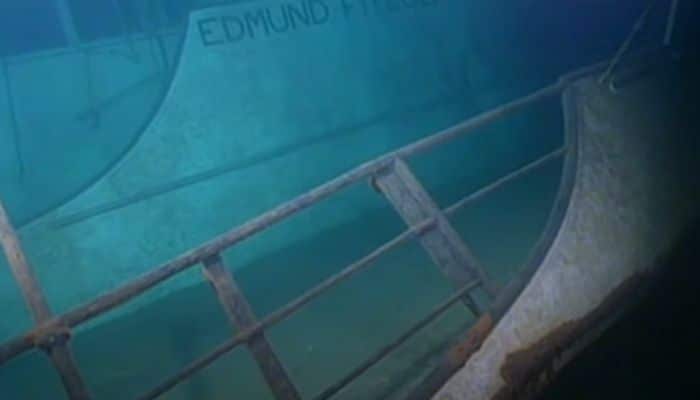
She embarked on her last unfortunate voyage from Wisconsin, near Duluth, on 9th November 1975. She was carrying a cargo of ore pellets and was headed by Captain Ernest M. McSorley.
The ship was destined for a steel factory in Detroit and was moving when she was joined by another ship SS. Arthur M. Anderson. The next day, both ships were caught in a strong storm with hurricane winds and almost 11 m high waves.
On the evening of 10th November 1975, Edmund Fitzgerald sank around 17 miles north-northwest of Whitefish Point, Michigan. The entire 29-member crew went down with it in what has become the greatest Great Lakes Shipping Tragedy of all time.
She was found by an aircraft belonging to the US Navy on 14th November 1975. Three expeditions were conducted at the site, and at the request of the family members of the crew, the ship’s bronze bell was retrieved on 4th July 1995.
2. HMHS Britannic
Belonging to the Olympic class of steamships, the White Star Line vessel was the youngest sistership of the RMS Olympic and the RMS Titanic. It was constructed to be a passenger liner; however, she functioned as a hospital ship from 1915 until she finally sank in November 1916.
She entered service before the First World War started. She was carefully designed, and lessons learned from the sinking of the Titanic were implemented in its construction to make it safe and comfortable.
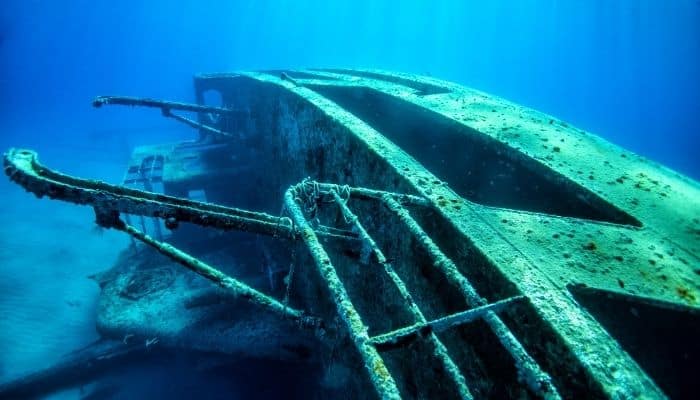
In 1915-16, she sailed between Britain and the Dardanelles. On 21st November 1916, she was shaken by a blast which occurred due to a naval mine of the German Navy. The incident took place near the Greek island of Kea in the Aegean Sea.
The ship sank around an hour later and killed 30 people. She became the biggest ship that sank during World War I and, more so, tragically. Of the 1066 people, 1036 survived and were rescued from the water and the lifeboats.
In 1975, its wreck was located, and it became the world’s biggest and most well-preserved passenger liner.
3. HMS Curacoa
HMS Curacoa was a light cruiser constructed for the Royal Navy. She functioned as a flagship most of the time. Assigned to the Atlantic Fleet in 1919, she was sent to the Baltic to support the British forces in their campaign during the Civil War in Russia.
After encountering a naval mine, she suffered damage and was sent to be repaired. Later she was shifted to the Mediterranean fleet in 1922-23 to support British Troops in Turkey.
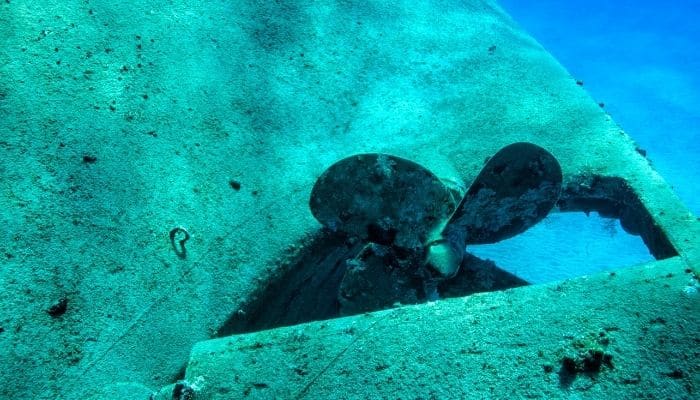
She was converted to a training ship in 1933, and in 1939, before the Second World War started, she was made into an anti-aircraft cruiser.
After 1940, she became an escort ship. In 1942, she escorted the RMS Queen Mary, which resulted in the tragedy. The former was carrying around 15,000 US troops and was moving in a zigzag course to avoid German bombers and possible enemy vessels.
Queen May caught up with the escort ship Curacoa and was trying to overtake her. One of the seamen of Curacoa, Ernest Watson, was admiring Queen Mary when he noticed its bow swinging toward the cruiser. He realised that the two ships were soon going to collide.
The 20 times bigger Queen Mary rammed into Curacoa’s metal plating and sliced it in half before it sank in no time. Out of 430 men onboard, only 99 seamen and 2 officers survived.
4. The fleet of Kublai Khan
Kublai Khan’s lost fleet is one of the most famous shipwrecks of old times. Two Mongolian invasion fleet attempting to attack Japan was wrecked in storms in 1274 and 1281, killing tens of thousands of troops.
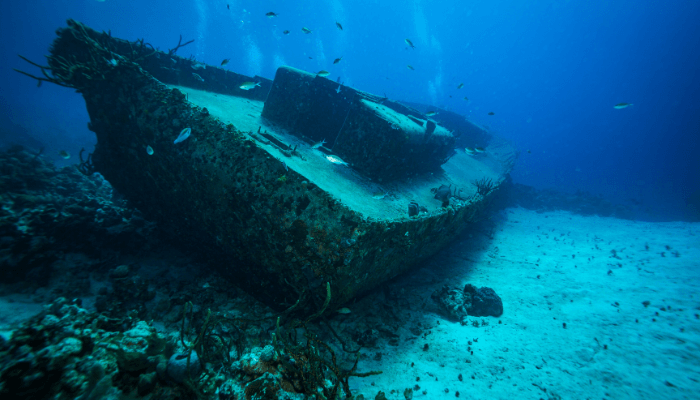
Several artefacts belonging to these vessels were found centuries later on the seabed of the Imari Gulf. In October 2001, an entire shipwreck claimed to originate from Fujian in south China was discovered by archaeologists.
Recently in 2015, archaeologists located a Mongolian ship in a bay close to the city of Matsuura, near the island of Kyushu.
5. The Spanish Armada
The Spanish Armada, a fleet of 130 ships on a mission to invade England in 1588, was disrupted by storms, and a large number of the Armada’s ships were wrecked on the coasts of Scotland and Ireland, killing around 5000 soldiers.
Among the drowned were most of the soldiers and crewmembers of the 32-gun warship La Juliana, built near Barcelona in 1570.
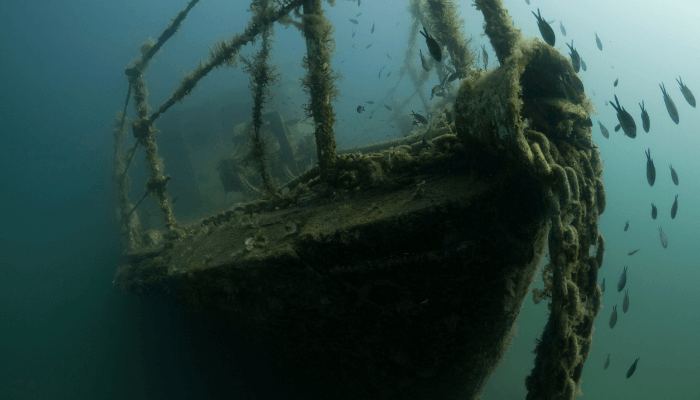
In 1985, local divers discovered the wreckage of three fleet vessels, including La Lavia, La Santa Maria de Vision, and La Juliana. In 2015, several cannons from La Juliana were found in the sands off Streedagh in Co Sligo.
6. RMS Titanic
RMS Titanic, the most famous ship for never making her destination, was the largest cruise ship of its time. The Titanic was built in Ireland at the Harland and Wolff shipyard. It was considered to be the most developed ship of that era.
However, the Titanic, famously described as ‘unsinkable,’ unfortunately sank after colliding against an iceberg on its maiden voyage- from Southampton to New York City- on 14 April 1912 in the North Atlantic Ocean.
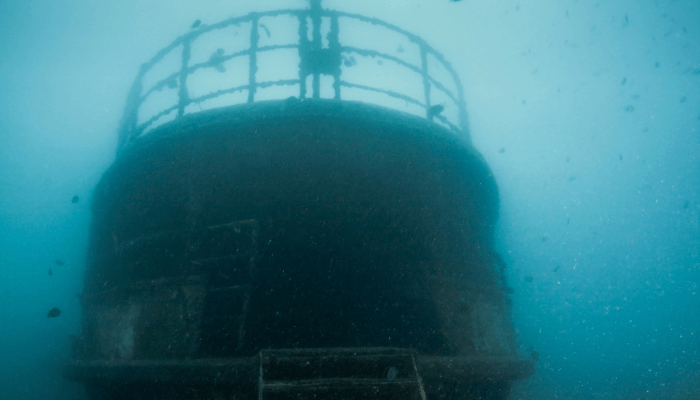
Around 1,517 people lost their lives in one of the biggest marine tragedies in history.
After many unsuccessful expeditions, the wreck was finally located by a joint French–American expedition in 1985. Several artefacts and debris have been removed from the shipwreck and are displayed in the National Maritime Museum in England.
Many schemes were proposed to raise the ship, but the fragile condition of the vessel prevented such plans. The 2001 UNESCO Convention now protects the wreck of the RMS Titanic.
7. RMS Empress of Ireland
Canadian ocean liner RMS Empress of Ireland sank near the mouth of the Saint Lawrence River on 29 May 1914 after colliding with the Norwegian collier SS Storstad due to thick fog, killing 1012 people.
The vessel was en route from Quebec City to Liverpool, with 1057 passengers and a crew of 420 abroad, when the ship went down in one of the worst disasters in Canadian maritime history.
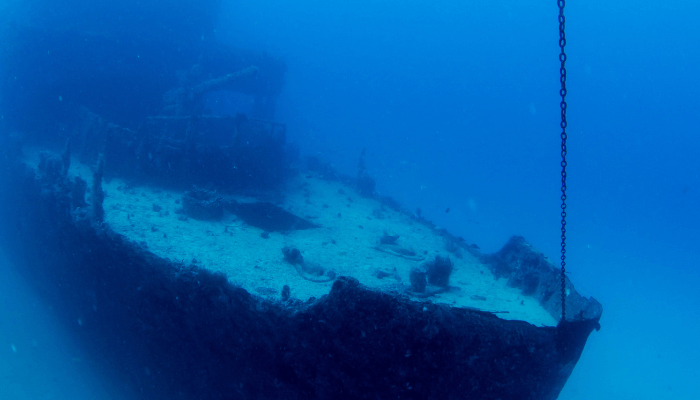
At present, the wreck of Empress of Ireland lies in a shallow 130 ft of water.
Several divers have recovered several valuables, including silver bars, a brass bell, and a stern telemeter, from the ship on several occasions after the incident.
8. MS Estonia
The Estonia ship casualty in the Baltic Sea is one of the biggest maritime incidents in the recent past. The cruise ferry MS Estonia, built in the German shipyard Meyer Werft, was en route to Stockholm from the Estonian province of Tallinn when it sank on 28 September 1994.
Over 800 people lost their lives in this horrifying incident, and most of the bodies were never recovered.
The cause of the accident remains controversial as there are many theories about the cause of the sinking. The most commonly known reason for the accident is said to be the rough weather conditions that the ship encountered.
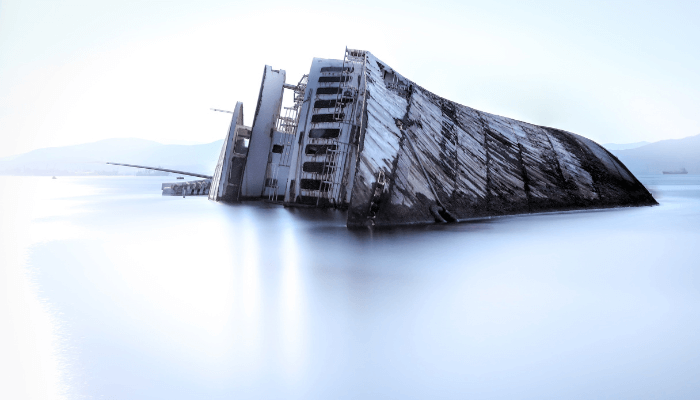
However, other sources disregarded this reason and stated that because of the ship’s military involvement, bombs were planted by rival countries to destroy the ship.
After the accident, there were demands from the relatives of the deceased to raise the vessel to give a land burial. And at the same time, there were discussions to raise the ship for a detailed inspection to know the cause of the accident.
However, the Swedish government decided to bury the vessel, and thousands of tons of pebbles were dropped on the site.
As per the Estonia Agreement 1995, the burial site has been designated as a sea grave and prohibited the exploration of the wreckage.
9. The Andrea Doria
The Italian ocean liner Andrea Doria sank after colliding against the Swedish ship MS Stockholm in July 1956, killing 46 people.
The vessel, which had 1,134 passengers and 572 crew members on board, was en route to New York City when it met with one of the most infamous maritime disasters in history.
However, despite the severity of the incident, not many lives were lost thanks to the timely communication by the ship’s authorities and commendable rescue efforts.
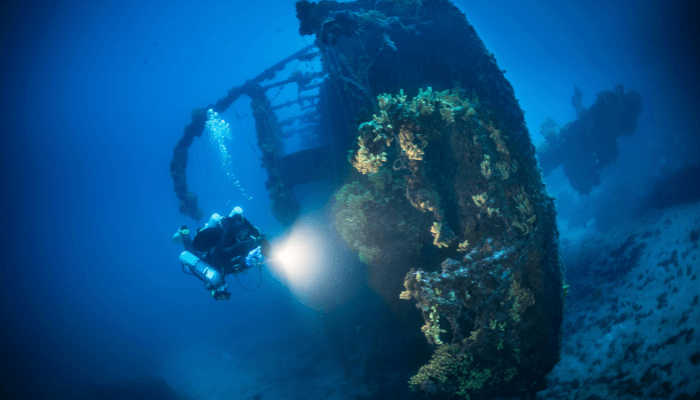
After the sinking of the vessel, divers Peter Gimbel and Joseph Fox managed to locate the wreck of Andrea Doria.
Today, resting in some 240 feet of the North Atlantic water, the wreck of Andrea Doria has become a popular site among scuba divers, being called “Mount Everest of scuba diving.”
10. HMS Victory
The 100-gun ship of the Royal Navy, HMS Victory, was launched in 1737 and met with an accident in the English Channel in 1744.
The sinking of HMS Victory, one of the worst British naval disasters in the English Channel, claimed the lives of more than 1,000 sailors.
The ship disappeared in the Channel Islands, and for over 250 years, there was no sight of any remains of the ship.
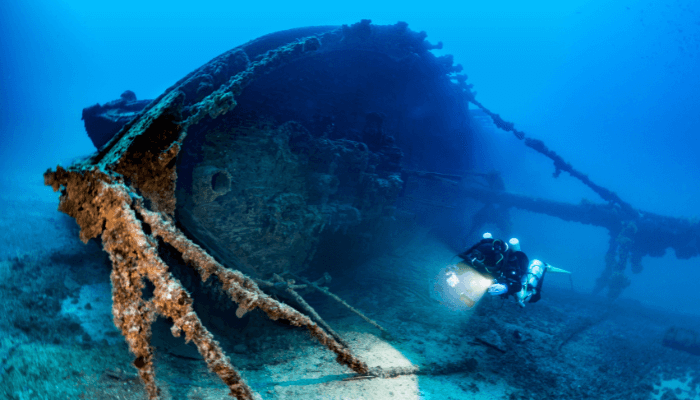
The shipwreck was discovered in 2008 by the Odyssey Marine Expedition of the United States around 43 nautical miles from where it encountered the storm and disappeared.
As a military wreck, the remains of HMS Victory are now the property of the British Government under maritime laws.
11. MV Doña Paz
The Philippine-registered passenger ferry MV Doña Paz was en route from Leyte Island to Manila when it sank after colliding with the oil tanker MT Vector on 20 December 1987.
One of the deadliest peacetime maritime disasters in history, the collision claimed the lives of at least 4,386 people.
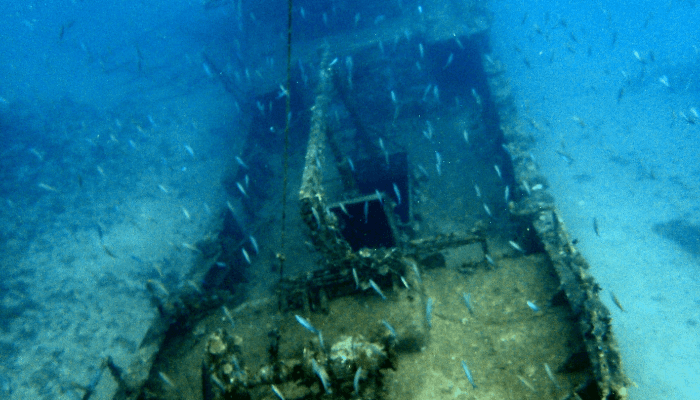
Reports then revealed that the vessel was overcrowded, the ship did not have a radio, and passengers didn’t have immediate access to life jackets.
The ship, now known as ‘Asia’s Titanic,’ was mostly destroyed in the collision due to the fire.
12. The Carpathia
The British passenger liner RMS Carpathia is best known for rescuing survivors from the Titanic when the cruise ship met with an accident.
However, Carpathia met with the same destiny when it was destroyed by a German submarine in the year 1917, at the time of World War I.

The vessel was attacked by three torpedoes from a German U-boat when it was moving as part of a convoy travelling from Liverpool to Boston, and five people were killed in the accident.
The Carpathia wreck was found in 1999 by a company known as Argosy International Ltd, in 600 ft of water, 298 km west of Land’s End, sitting upright on the ocean bed.
13. The Mary Rose
The Mary Rose was a warship in the navy of the Tudor King Henry VIII and was destroyed while leading an action against a French ship in Solent on the Isle of Wight on 19 July 1545.
The ship sank in a strait of the English Channel, claiming the lives of hundreds of men.
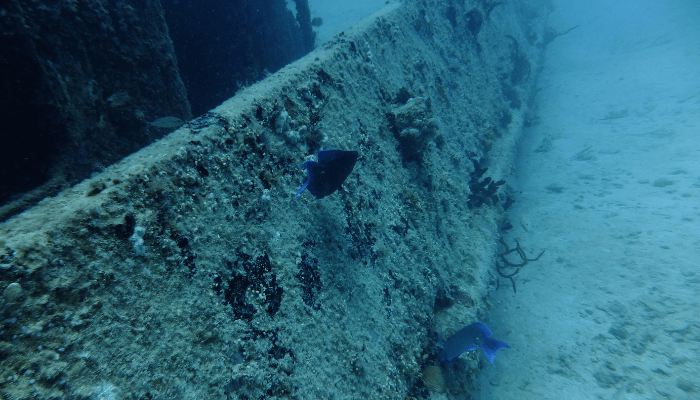
This shipwreck was salvaged in 1982 by the Mary Rose Trust, and now the artefacts are displayed in the Portsmouth Historic Dockyard.
The artefacts discovered in the Mary Rose were unique, offering immense knowledge about the equipment of naval warfare of that era.
14. The Vasa
The Vasa was a Swedish war vessel built during the 17th century, and it was the most high-tech warship when it set sail. However, the ship sank during its maiden voyage in the year 1628 in Stockholm Harbor.
Many unsuccessful attempts were made to raise the ship from the seabed in the following years.
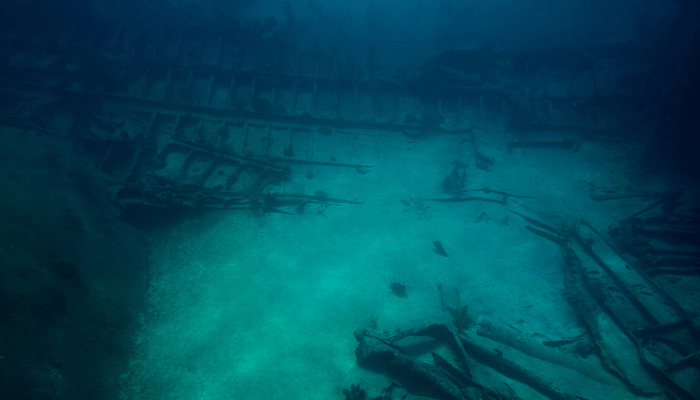
Finally, the Vasa was recovered in 1961, and at present, the remains of the Vasa are stored at the Vasa Museum in Stockholm, where it attracts more than a million visitors per year.
15. The Rhone
The iron-hulled steamship RMS Rhone was a UK Royal Mail Ship or packet ship owned by the Royal Mail Steam Packet Company. This ship was lost in a hurricane off the coast of Salt Island in the British Virgin Islands in 1867, killing 123 people.
The topmast of the vessel remained above the waterline for a long period after the accident, and the Royal Navy blew up the stern of the ship only in 1950 due to navigational hazards.
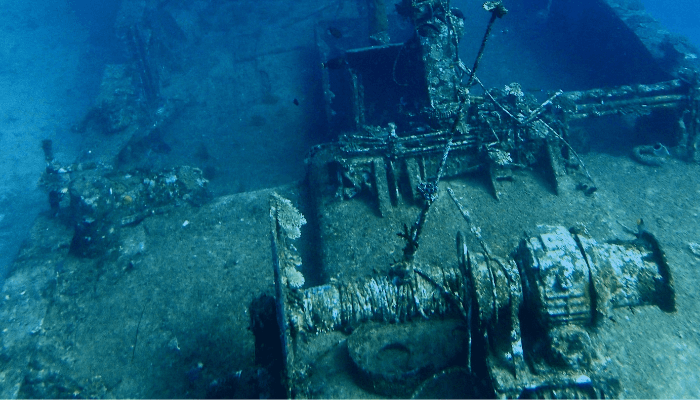
At present, because of the way the shipwreck is positioned in the water, the Rhone is regarded as the best diving destination in the Caribbean.
16. The Sultana
In one of the worst and least recognised maritime disasters in the history of the US, the explosion and sinking of steamboat Sultana on 27 April 1865 took 1,800 lives on the Mississippi River near Memphis.
The ship was used at the end of the American Civil War to transport the POWs from the Union army back home, and the vessel met with an accident after the explosion of its boilers.
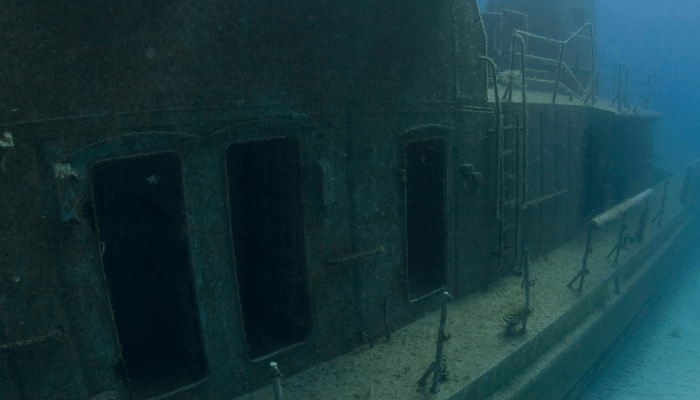
The ship’s wreck was found in 1982 in a soybean field on the Arkansas side, around 6 km from Memphis.
Featuring a few relics from the ship, a temporary Sultana Disaster Museum was opened in 2015 on the 150th anniversary of the tragedy.
17. The RMS Republic
The steam-powered ocean liner RMS Republic, built-in 1903, was lost at sea after colliding with the Lloyd Italiano liner SS Florida in 1909.
The vessel was en route from New York City to Gibraltar and Mediterranean ports when it met with an accident that killed six people.
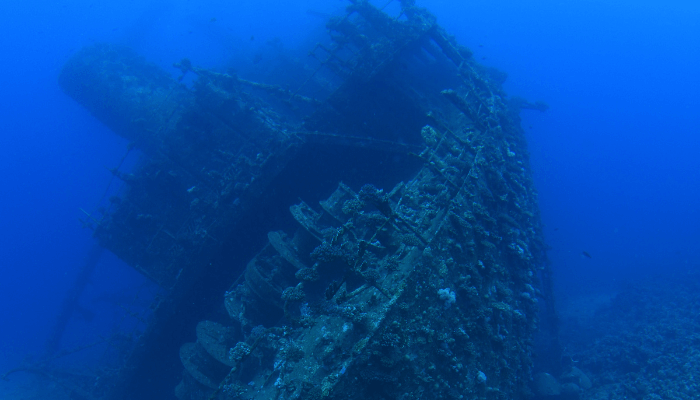
Several rumours suggest that the Republic was carrying valuables, including gold, when she went down off Nantucket, Massachusetts.
The Republic wreck, found in 1981 by Captain Martin Bayerle, lies upright around 80 km south of Nantucket Island, around 250 feet underwater.
18. RMS Lusitania
British ocean liner RMS Lusitania was the world’s largest passenger ship for a brief time when it launched in 1906.
The vessel was sunk on 7 May 1915 after being attacked by a German U-boat off the southern coast of Ireland, killing 1962 passengers and 1191 crew members.
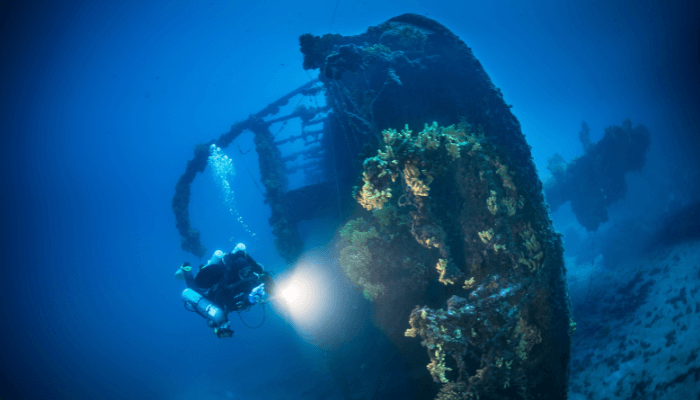
The disaster occurred on the 202nd trans-Atlantic crossing of RMS Lusitania. After a few salvage efforts, several items were recovered.
Currently, the wreck lies 11 miles south of the lighthouse at Kinsale, Ireland, with around 300 feet of water.
19. USS Arizona
The USS Arizona was a US Navy Battleship. It was named after the 48th state and was the last vessel of the Pennsylvania class. She was commissioned in 1916 and participated in crucial missions and operations during the First World War.
The ship escorted President Woodrow Wilson to the Paris Peace Conference and was deployed to serve in the Greco-Turkish War in 1919. In 1921, she joined the Pacific Fleet. In the 1920s and 30s, USS Arizona participated in training exercises and was refurbished too.
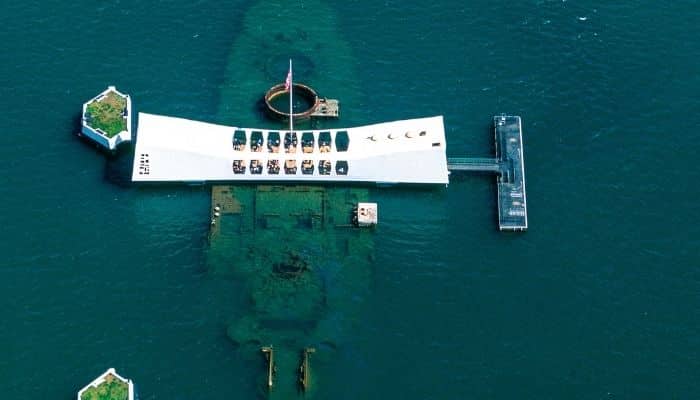
It provided relief efforts in 1933 after an earthquake near Long Beach, California. In 1940, the home port of the Pacific Fleet shifted from California to Pearl Harbour, a move to check the Japanese influence.
On 7th December 1941, the Japanese forces launched an attack on Pearl Harbour. The USS Arizona was struck by several bombs dropped by aeroplanes. Hence, the ship sank, taking with it about 1177 naval officers and crew. Unlike other ships attacked the same day, Arizona was damaged badly and could not be repaired or brought back.
Its shipwreck is located at Pearl Harbour’s bottom, near the USS Arizona Memorial, built in memory of those who died during the attack.
20. USS Indianapolis
The USS Indianapolis was a heavy cruiser of the US Navy, belonging to the Portland Class. It was launched in 1931 and played a major role in the Pacific Theater of Operations during the Second World War. It was a part of many wars and campaigns, such as the Battle of the Philippine Sea.
On 30th July 1945, the ship was headed to Leyte from Guam when it was struck by 2 torpedoes fired by I-58, a Japanese submarine. They hit the ship near its bow, which caused it to sink in no time. She sank in just 12 minutes with most of its crew onboard.
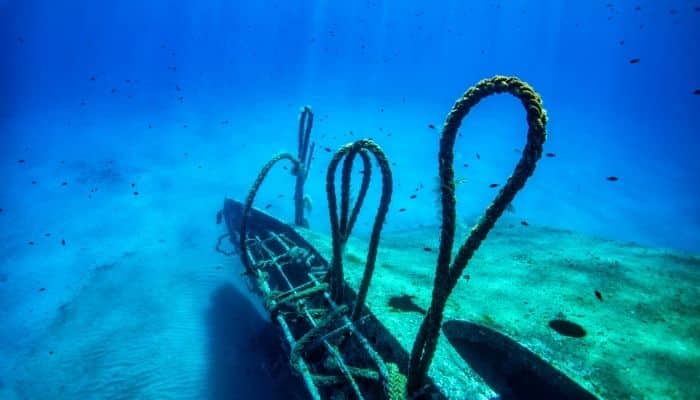
Unfortunately, there was also a communication error, and its sinking could not be reported on time. The crew was left in the open water for 4 days without food and drinking water before a patrolling plane spotted them and rescued the survivors. However, till then, many of the crew had perished as a result of dehydration, shark attacks, exposure and saltwater poisoning.
The ship was carrying 1196 crew, of which only 316 survived. The sinking of the USS Indianapolis is one of the worst maritime disasters in U.S. Naval history.
In 2017, a search team found the ship’s wreckage in the Philippine Sea at a depth of around 18,000 ft and in 2018, the crew was awarded a Congressional Gold Medal.
21. HMS Hood
HMS Hood was the Royal Navy’s Battlecruiser constructed during the First World War. Although new vessels were being built at that time, Hood remained the biggest warship in the world for two decades after it was commissioned in 1920. Her prestige and honour were evident through her nickname ‘The Mighty Hood’.
The ship had to patrol the waters and also functioned as an escort ship in the North Atlantic. In May 1941, Hood and another ship called Prince of Whales were told to intercept the German warship Bismarck and Prince Eugen, which were headed to the Atlantic to attack convoys.
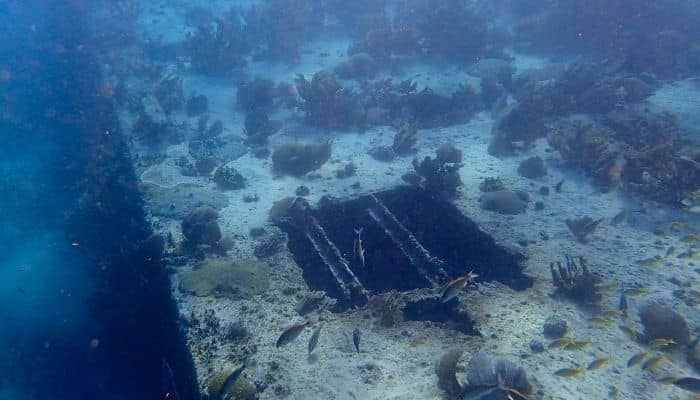
On 24th May 1941, during the Battle of Denmark Strait, the ship was hit by many German shells, which led to many explosions and its sinking with the loss of all but 3 of her 1418 crew members. Since the ship was considered invincible and was a symbol of power for the navy and British people, its sinking affected British morale.
22. SS Central America
SS Central America, also known as the Ship of Gold, was an 85 metres long sidewheel steamer. She operated between Central America and the eastern coast of the U.S. in the 1850s.
The steamship sank in 1857 off the South Carolina coast due to a hurricane. 425 of her 578 passengers and crew went down with the ill-fated ship, which was also carrying 30,000 pounds of gold and other precious items. The ship was on its voyage from Panama to New York.
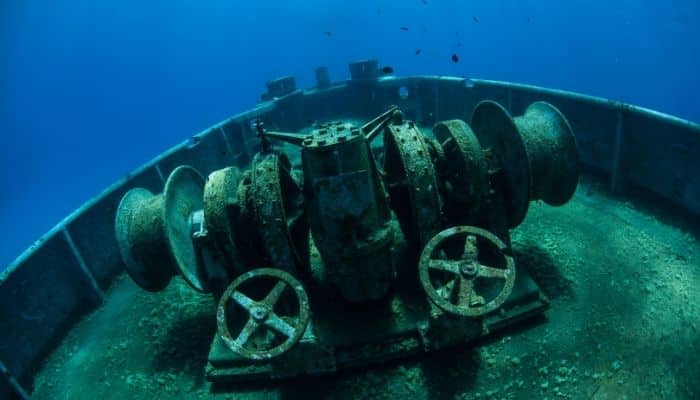
Its sinking was a crucial event in American history since it contributed to the panic of 1857, a financial crisis which went on for many years.
In the 1980s, a team of explorers found the wreck of SS Central America, and they recovered some amount of gold and other precious items from it. The discovery of this vessel and its treasures was said to be one of the greatest archaeological finds of the century.
23. Bismarck
Named after Chancellor Otto von Bismarck, the battleship Bismarck was constructed for Nazi Germany’s Kriegsmarine. She was laid down in 1936, launched in 1939 and work on it was completed in 1940, after which she joined the German Fleet. Bismarck and Tirpitz were the largest battleships ever constructed by Germany, and they were two of the biggest ships built by a European power at that time.
However, it sank on 27th May 1941 in the North Atlantic, a significant event in naval history. In May 1941, Bismarck engaged in a battle with the British Royal Navy’s HMS Hood and HMS Prince of Wales. Eventually, Bismarck sank the Hood with its firepower but sustained damages and retreated to France for repairs.
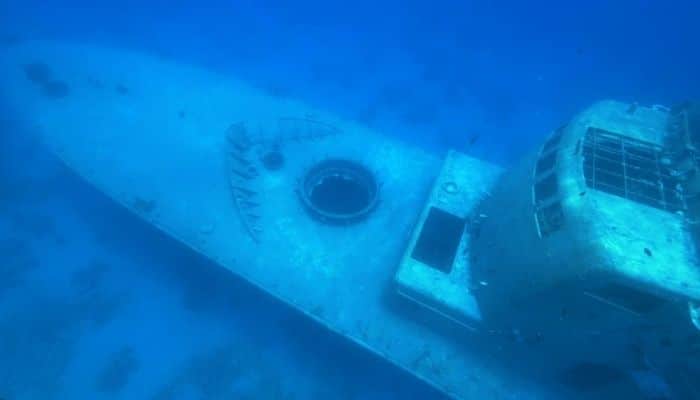
However, the Royal Navy was now determined to sink Bismarck and pursued the battleship by launching a massive search operation. After a few days, Bismarck was located, and she was attacked by 15 torpedo bombers from the aircraft carrier HMS Ark Royal. Hence, the ship was hit, and its steering gear became inoperable.
The next morning, two British warships and two heavy cruisers attacked Bismarck. The ship ultimately sank, taking most of its crew with it.
24. HMAS Sydney
HMAS Sydney was a light cruiser of the Royal Australian Navy during the times of the Second World War. On 19th November 1941, she engaged in a battle with the German cruiser Kormoran off the western coast of Australia.
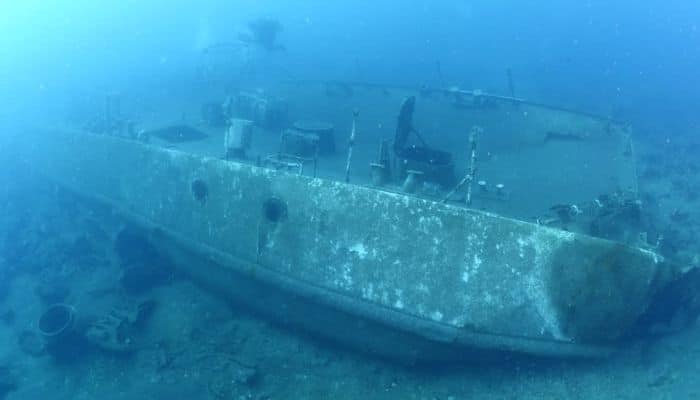
The German auxiliary cruiser was disguised as a Dutch freight ship and was carrying out raiding operations in the Indian Ocean. In the skirmish, the Koromoran was damaged severely, but it managed to get a lucky hit on the Australian cruiser, which led to a catastrophic explosion on the HMAS Sydney. It not only destroyed the ship, but all of its 645 crew members were killed as the ship sank.
There is a debate among experts as to what exactly happened since there were no survivors to give a first-hand account. However, it is believed that the Koromoran fired a torpedo that struck Sydney’s Magazine, which led to the explosion. The sinking of HMAS Sydney was a big tragedy for Australians.
25. USS Yorktown
USS Yorktown was an aircraft carrier of the US Navy that operated during the Second World War. It was named after the 1781 Battle of Yorktown and was commissioned in 1937. She was the lead ship of her class and took part in many important battles, such as the Battle of Midway and the Battle of the Philippine Sea.
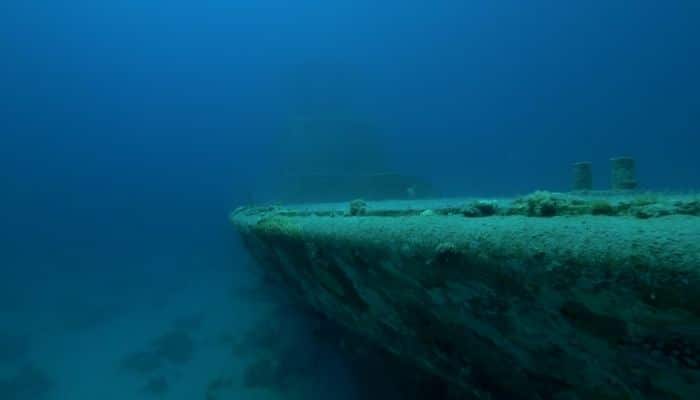
Yorktown sank two Japanese fleet carriers and took Japanese aerial attacks at Midway. On 4th June 1942, during the Battle of Midway, she was crippled by a Japanese aircraft. She lost power, and salvage efforts began. She was being towed by USS Vireo. However, on the afternoon of 6th June, I-168, a Japanese submarine fired many torpedoes, of which 2 struck Yroktown, and the third hit the USS Hammann, a destroyer of the US Navy, which was providing auxiliary power to Yorktown.
As the situation became dangerous, the repair crew evacuated Yorktown, which ultimately sank on 7th June 1942.
26. SS Eastland
The SS Eastland was a passenger vessel built in 1903 by Jenks Shipbuilding based in Port Huron, Michigan, for the Michigan Transport Company. The ship was used for tours, taking passengers from Chicago to several destinations across Lake Michigan.
On 24th July 1915, the SS Eastland was about to leave for Michigan City, Indiana, with over 2500 people and crew onboard when tragedy struck. The vessel listed heavily to one side while it was still docked at the wharf. In a couple of minutes, the ship capsized with many people trapped below deck.
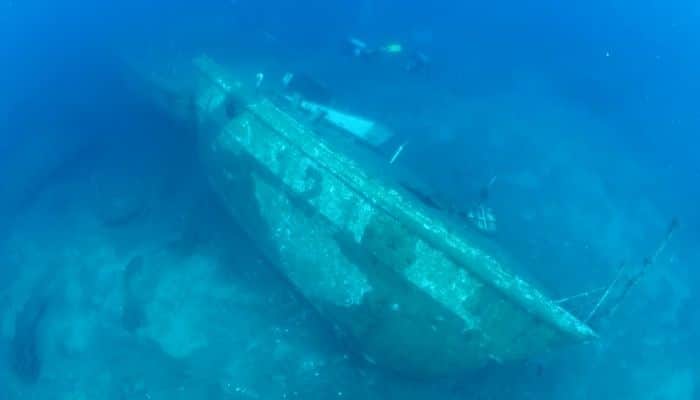
Rescue efforts could not save all and led to the death of 844 people, making it one of the deadliest and heart-wrenching maritime disasters in the history of the U.S. Most people on the ship were immigrants from the Czech Republic, Norway, Poland, Sweden, Denmark, Italy, Hungary and Austria.
The cause of the tragedy was said to be an amalgamation of many factors in the ship’s design and construction, and also overcrowding plus improper loading of cargo.
27. MV Wilhelm Gustloff
The MV Wilhelm Gustloff was initially a cruise ship. However, it was taken by the German Navy in 1939 to serve as a transport vessel for German military personnel and refugees. She also served as a hospital ship in 1939-1940.
Launched in 1937, the ship was intended to be named Adolf Hitler but was instead christened after Wilhelm Gustloff, leader of the Swiss branch of the Nazi party, who was assassinated in 1936. Hitler decided to name the ship after him when he met the former leader’s widow at the memorial service.
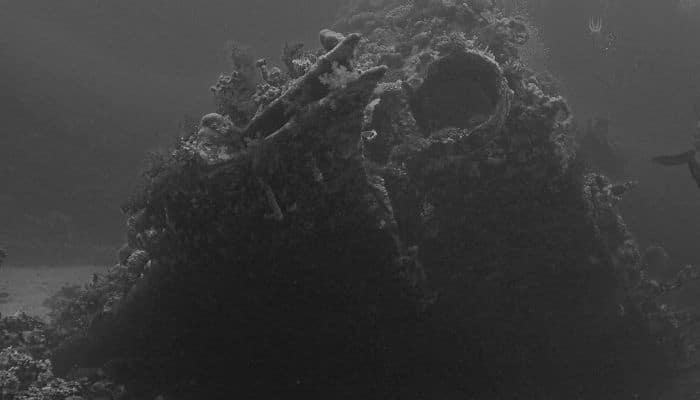
On 30th January 1945, the ship was torpedoed by Soviet Submarine S-13 in the Baltic Sea. This happened when the vessel was evacuating civilians and military personnel from East Prussia and the German-controlled Baltic States as the Red Army closed in.
She sank in less than 60 minutes, killing around 9400 people, mostly civilians.
28. General Slocum
General Slocum was a steamship named after Civil War General and New York Congressman Henry Warner Slocum. Owned by Knickerbocker Steamboat Company, the ship operated in the city of New York as an excursion steamer for another 13 years.
She was constructed in Brooklyn, New York, in 1891 and during her service, she was involved in many mishaps, including many groundings and collisions. It started four months after she was launched as she ran aground off Rockaway, and tugboats were used to set her free.

On 15th June 1904, the ship caught fire and sank in the East River, New York City. During the accident, she was carrying the members of St. Mark’s Evangelical Lutheran Church to a church picnic. Around 1021 out of the 1342 people were killed in the accident.
The fire was caused by a cigarette or a possible spark from one of its boilers which ignited the highly flammable material on the ship. It was not equipped with enough lifeboats, and the crew was not properly trained to manage such situations.
29. HMS Birkenhead
HMS Birkenhead, or HM Troopship Birkenhead of the Royal Navy, was one of the 1st ships to have an iron hull. She was made to be a steam frigate but later transformed into a troopship before it was commissioned.
She was launched in 1845 and sank off the South African coast on 26th February 1852, which led to the deaths of more than 400 people, including women and children.
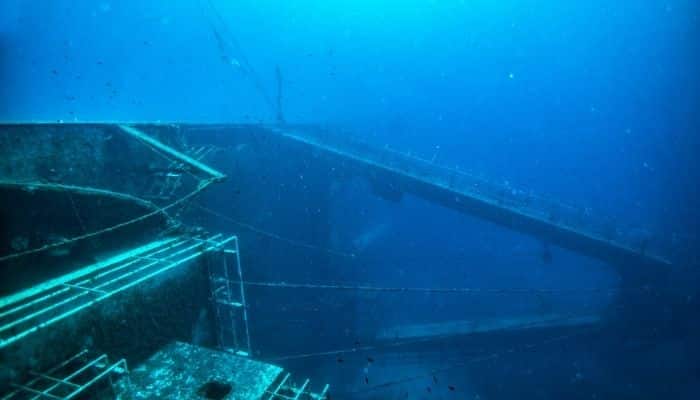
When she sank, the Birkenhead was on a mission. She was carrying troops to South Africa for the Frontier Wars and also had a few civilians. However, she hit an uncharted rock and began to take in water.
There were not enough lifeboats for everyone, and so the soldiers stood on the deck to allow the women and children to get on the few lifeboats available onboard. This act of chivalry has come to be known as the Birkenhead Drill.
However, in spite of this bravery by the soldiers and members of the crew, more than 400 people died when the ship sank.
30. El Cazador
The El Cazador was a Spanish brig that sailed in the late 18th century, ultimately sinking in the Gulf of Mexico in 1784. In the 1770s, the economy of Spanish Louisiana was suffering due to the usage of paper money not backed by gold or silver. Hence Carlos III, the King of Spain, decided to replace the paper money with Spanish silver coins.
In 1784, the ship left the port of Veracruz in Mexico to deliver a huge shipment of silver coins to New Orleans. The ship’s captain was Gabriel de Campos y Pineda. However, Cazador never reached its destination. It is argued that the ship was caught in a storm and sank off the Louisiana coast, taking precious cargo with it.
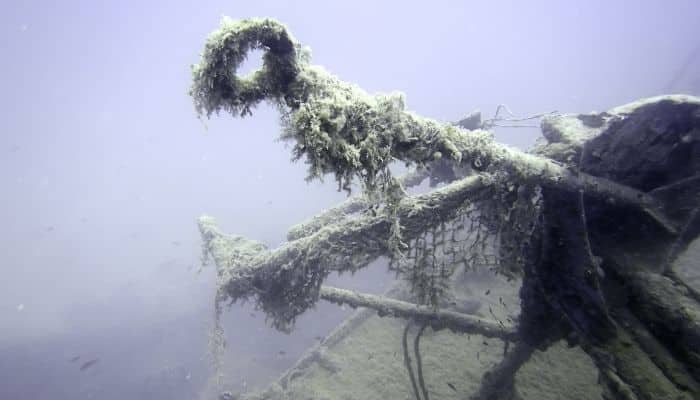
In 1993, the wreck of El Cazador was found by a shrimp boat captain Jerry Murphy who was fishing in the waters of the Gulf of Mexico. After the successful salvage effort, thousands of silver coins were found in the vessel’s hold. They were in a pretty great condition despite being in the water for over 200 years.
The discovery of El Cazador and its treasure is said to be one of the greatest maritime finds of the 20th century.
Conclusion
There are many famous shipwrecks in the world apart from the ones mentioned above. However, these shipwrecks have captivated people’s imaginations for many years.
From the unfortunate sinking of the Titanic to the mysterious disappearance of many ships, stories of ships have become a part of our collective history and culture. They have been depicted in art, paintings, movies, songs etc.
While shipwrecks took countless lives and led to immense suffering, they helped engineers to design more efficient and safer ships.
The sinking of ships also led to the implementation of stricter regulations and enforcement of new safety rules for ships at sea, which revolutionised maritime travel as well.
Today, these shipwrecks inspire marine enthusiasts to uncover the mysteries behind them and remind us of the ruthlessness and dangers of the sea and the strength of the human spirit.
Frequently Asked Questions About Shipwrecks
1. What is the most famous shipwreck?
The RMS Titanic is the most tragic shipwreck in the world. It has become popular due to the 1997 movies directed by James Cameron.
2. What Great Lake has had the most shipwrecks?
All great lakes have hundreds of shipwrecks, but most are found in Lake Erie.
3. What is the most popular unfound shipwreck in the world?
Flor de la Mar is the most famous shipwreck, filled with diamonds, gold and other riches.
4. What is the deepest shipwreck ever found?
The U.S.S Samuel. B Roberts was found in the Philippine Sea at 22,916 feet. It is the deepest shipwreck ever found.
5. Can you claim a shipwreck?
Yes, a country can claim ownership rights of a vessel if it owns the ship. Even if the vessel was sunk for hundreds of years, ownership rights could be claimed.
You may also like to read:
- 11 Books On Shipwreck And Maritime Archaeology You Might Be Interested In
- 6 Latest Shipwrecks Found Around the World
- 10 Great Lakes Shipwrecks
Disclaimer: The authors’ views expressed in this article do not necessarily reflect the views of Marine Insight. Data and charts, if used, in the article have been sourced from available information and have not been authenticated by any statutory authority. The author and Marine Insight do not claim it to be accurate nor accept any responsibility for the same. The views constitute only the opinions and do not constitute any guidelines or recommendations on any course of action to be followed by the reader.
The article or images cannot be reproduced, copied, shared, or used in any form without the permission of the author and Marine Insight.
Do you have info to share with us ? Suggest a correction

About Author
Zahra is an alumna of Miranda House, University of Delhi. She is an avid writer, possessing immaculate research and editing skills. Author of several academic papers, she has also worked as a freelance writer, producing many technical, creative and marketing pieces. A true aesthete at heart, she loves books a little more than anything else.
Subscribe To Our Newsletters
By subscribing, you agree to our Privacy Policy and may receive occasional deal communications; you can unsubscribe anytime.



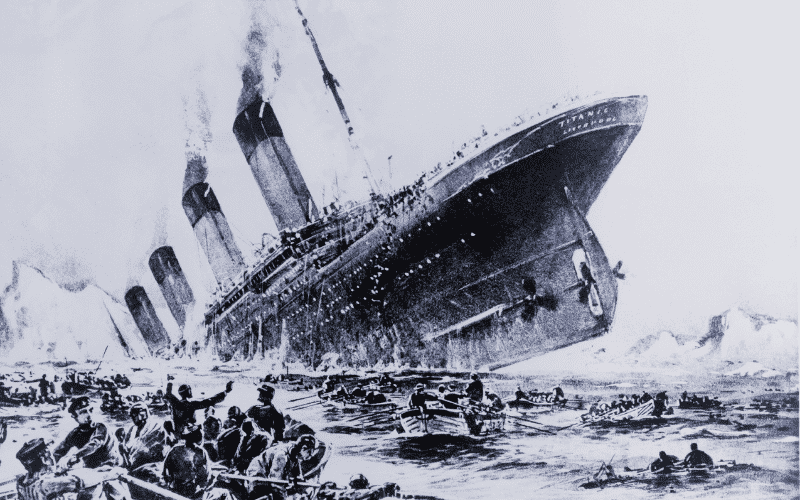

I love ships all my life
I have loved ships my hole life
National Maritime Museum, in England, reminds the memories of the most prestigious voyage of the Titanic. All the shipwreck are wonderful and amazing.
The Edmund Fitzgerald should be on that list, as its even more known & legendary than some of the ships listed there already.
I <3 THE TITANIC BROOO
Ships are so cool
Im so jelly man.
aw man
ships are cool bro
Ship are so cool
Ship are so cool man lit
Ever since I found out about the rms titanic I got so interested that I had to look for more shipwrecks the lovibond shipwreck is also my favorite it said love and jeoulsy is the talk of this haunted ship
Ships looks better when at the bottom of the Ocean….
Ever since I found out about the titanic I watched all videos about ships mysteriously disappearing or sinking
Cloaked in my wolf skin shawl, nestled in my comfy recliner of rich Corinthian leather; surrounded by deep mahogany and nurtured by my oaked Cabernet I can help but think: my god, ships are cool.
USS Arizona , Edmund Fetzgerald and HMHS Brittanic are also famous shipwrecks
Thank you Mitch for the value addition
I love ships sinking. It’s satisfying.
No USS Indianapolis?
Completely inaccurate about HMS victory which was never lost and was retired to the naval dockyard in Portsmouth England It has never been decommissioned and is the oldest commission vessel in the Royal Navy
the ship im looking for on here ISNT THERE
Very satisfying comments about ships. But really Edmund Fitzgerald, HMHS Britannic and HMS curocia aren’t here? It seemed this site is incomplete. Author might not got his full payment to do this 😂.
Looks like the author was on a sinking ship when it came to researching those particular vessels!